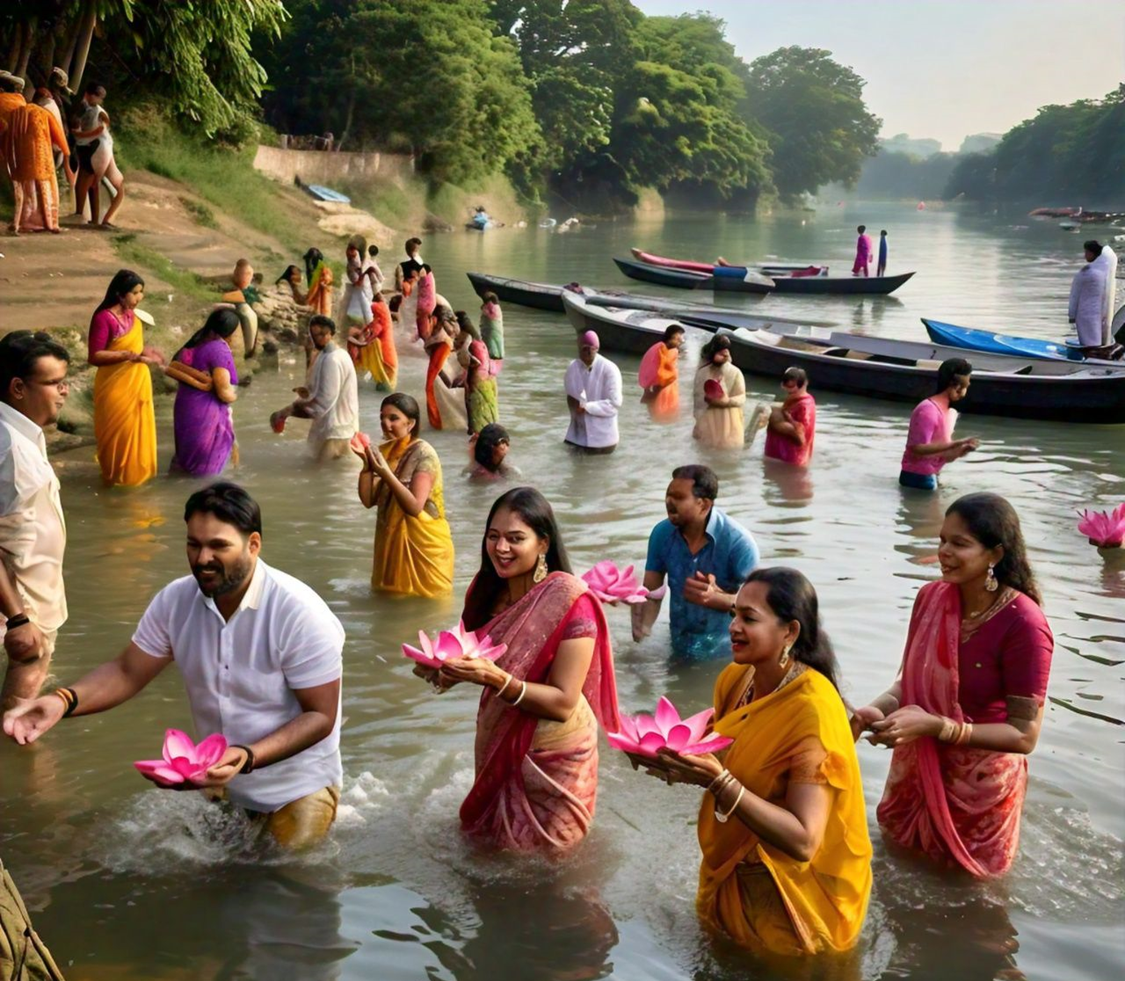Rakhi Purnima/Raksha Bandhan ;
Rakhi Purnima, also known as Raksha Bandhan, is an ancient Hindu festival celebrating the bond between brothers and sisters. Here's a brief history:
- Origins: Dates back to the Indus Valley Civilization (around 3000 BCE)
- Mythological significance:
- Lord Krishna and Draupadi's story: Krishna protected Draupadi's honor, and she tied a rakhi (thread) on his wrist.
- Lord Ganesha and Santoshi Maa's story: Ganesha's sister tied a rakhi on his wrist, and he promised to protect her.- Historical significance:
- Rajput queens sent rakhis to Mughal emperors, symbolizing brother-sister bond and seeking protection.
- In the 19th century, Indian independence movement leaders used Rakhi Purnima to promote unity and solidarity.
- Evolution: Over time, Rakhi Purnima has become a celebration of sibling love, friendship, and community bonding.
Rakhi Purnima is celebrated on the full moon day of the Shravan month in the Hindu calendar, typically in August or September.
Rakhi Purnima, or Raksha Bandhan, is famous for several reasons:
1. Symbolizes sibling love: Celebrates the bond between brothers and sisters, promoting affection, care, and protection.
2. Cultural significance: Deeply rooted in Indian culture and tradition, with historical and mythological importance.
3. Family values: Reinforces family ties, unity, and togetherness, strengthening relationships.
4. Festival of protection: Emphasizes the promise of protection and care from brothers to sisters.
5. Joyous celebration: Marked by joyful rituals, gift-giving, and festive atmosphere.
6. Social bonding: Extends beyond biological siblings, fostering friendships and community bonding.
7. Spiritual significance: Associated with spiritual growth, seeking blessings, and purification.
8. National and international recognition: Celebrated not only in India but also in Nepal, Pakistan, and by Indian diaspora worldwide.9. Emotional connection: Evokes emotions, nostalgia, and warmth, creating lasting memories.
10. Timeless tradition: Continues to evolve, adapting to modern times while retaining its essence and significance.
Maha Rakhi Purnima, or Raksha Bandhan, is primarily celebrated in the following countries:
1. India: Widely celebrated across the country, with different regions having their unique traditions and customs.
2. Nepal: Known as "Janai Purnima" or "Raksha Bandhan", it's an important festival in Nepalese culture.
3. Pakistan: Celebrated by the Hindu community in Pakistan, particularly in Sindh and Punjab provinces.
4. Bangladesh: Observed by the Hindu community in Bangladesh, with festivities and rituals similar to those in India.
5. Mauritius: Celebrated by the Indo-Mauritian community, reflecting the island nation's cultural diversity.
6. Sri Lanka: Known as "Raksha Bandhan" or "Akshya Tritiya", it's celebrated by the Sri Lankan Hindu community.
7. United States: Celebrated by the Indian diaspora and Hindu communities in the US, often with cultural events and festivities.
8. United Kingdom: Observed by the British Indian and Hindu communities, with celebrations and events in cities like London and Birmingham.
9. Canada: Celebrated by the Indo-Canadian community, with cultural events and festivities in cities like Toronto and Vancouver.
10. Australia: Observed by the Indian Australian and Hindu communities, with cultural events and celebrations in cities like Sydney and Melbourne.





No comments:
Post a Comment